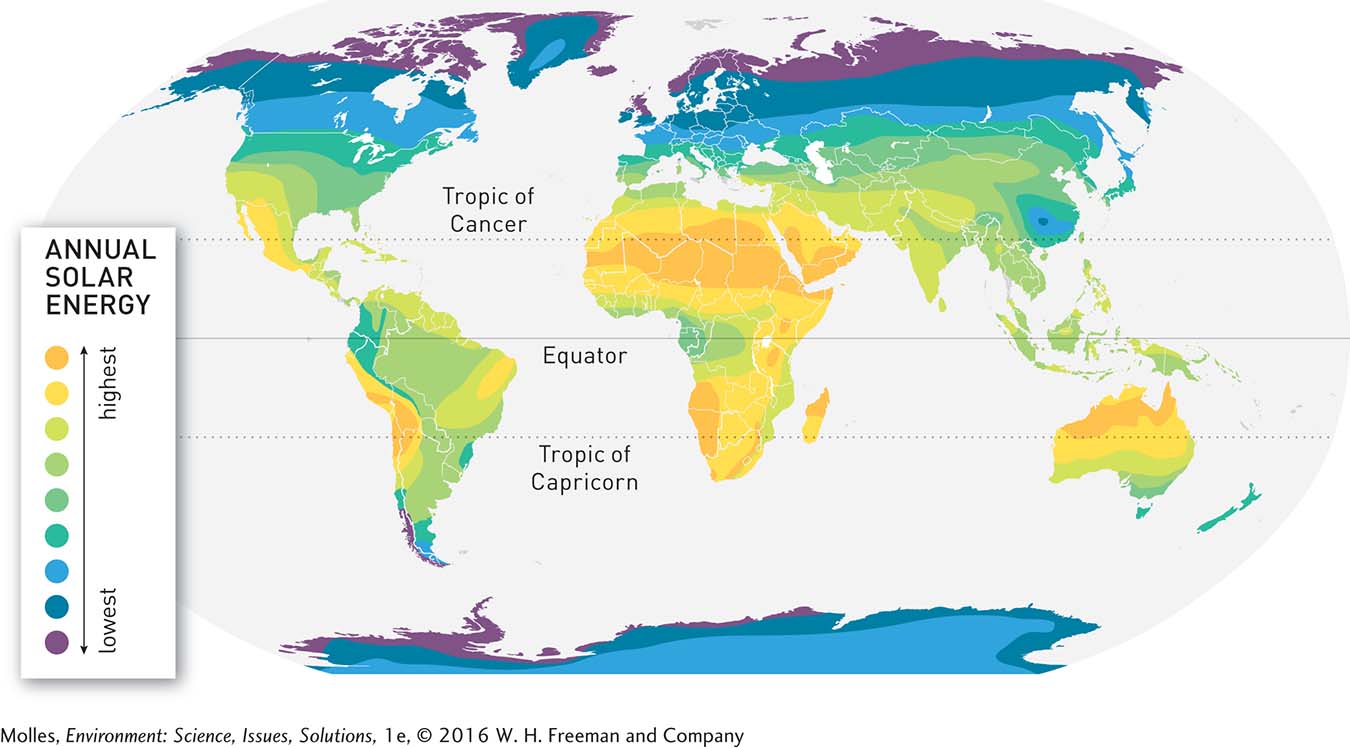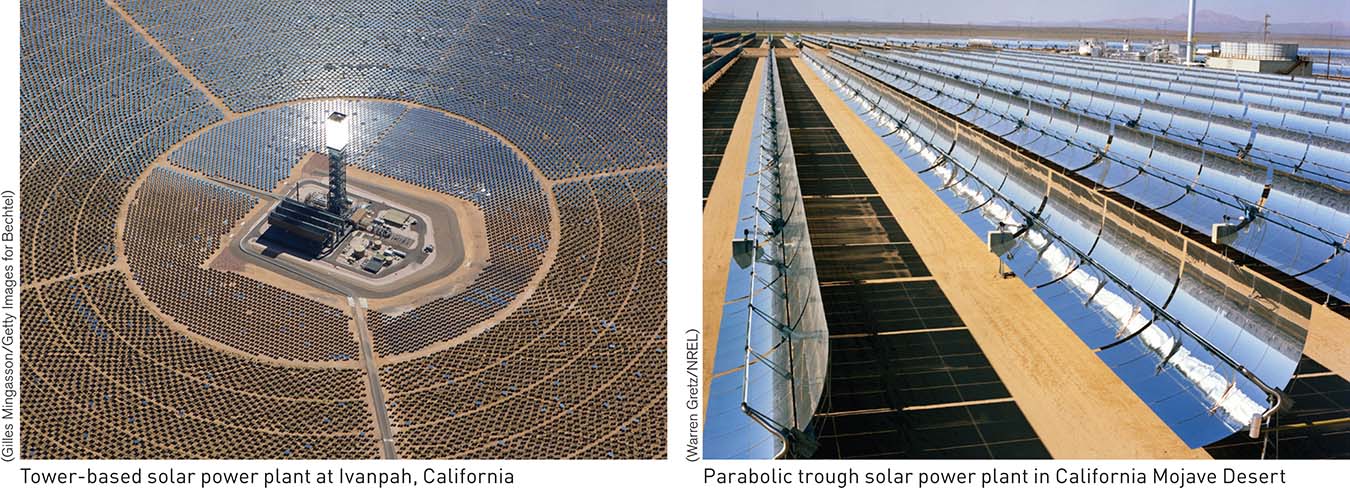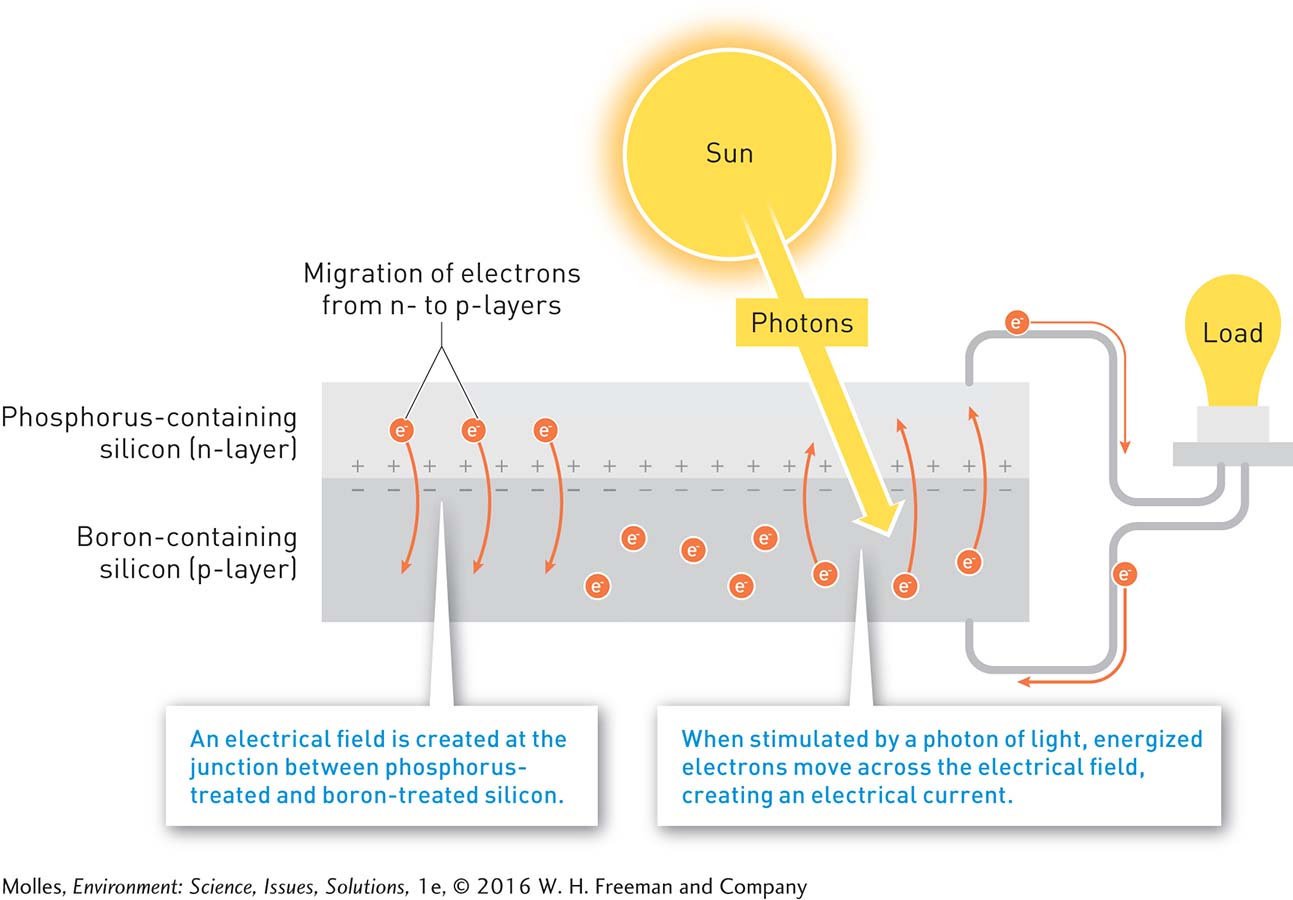10.1 Solar energy can be used as a heat source and to generate electricity
10.1–
298

Just as the Sun fuels Earth’s ecosystems, it also powers much of our renewable energy. We can harness sunbeams directly to heat homes or convert them into electricity using solar panels. But energy from the Sun also powers global wind patterns, long used to move people and cargo across the oceans (Figure 10.1), and is today turned into electricity using turbines. The Sun also warms water in the oceans and lakes, causing it to evaporate and rain down in the mountains, where it can be converted into electricity using hydroelectric dams. Sunlight fuels the growth of plants, and plant biomass can be burned to produce electricity or can be transformed into transportation fuels. Not all renewable energy resources come from the sunlight, however. Earth’s internal heat can be used to generate electricity, as well as for heating and cooling. The gravitational pull of the moon and the Sun creates the energy of the ocean’s tides, which can be harnessed.

The Sun glows because of the fusion of hydrogen atoms in its hot, gaseous core (see Figure 9.15, page 272). The energy radiating from the Sun is enormous: The amount that strikes Earth’s surface in just 2 hours exceeds global energy consumption from all sources in a year. The radiant energy the Sun emits, which we commonly call sunlight, looks orange and yellow, but it is actually a complex mixture of varying wavelengths of light (Figure 10.2).

299

There are thousands of species that can “see” ultraviolet and infrared light as well as light in our visible range. How might our “view” of the world change, if our visual range was similar to these species?
Approximately half of this radiant energy is visible to humans, with wavelengths between 400 and 700 nanometers (Figure 10.3). Infrared light, which we can perceive as heat, accounts for most of the light energy outside the visible range and is very important in Earth’s heat balance, as we shall see in detail in Chapter 14. The Sun also emits ultraviolet light, which consists of highly energetic, short wavelengths of light (> 400 nanometers). Most ultraviolet light is absorbed by ozone in the upper atmosphere before it reaches Earth’s surface (see Chapter 1, page 2).

One challenge with solar power, as with many sources of renewable energy, is that it provides only intermittent power—

What factor is responsible for the decrease in available solar energy across the United States from the Southwest to Southeast?
The uneven heating of Earth’s surface by sunlight produces a greater concentration of solar energy near the equator, between the Tropics of Cancer and Capricorn. In addition, the availability of solar energy at Earth’s surface is strongly affected by cloud cover. Consequently, arid and semiarid regions near the Tropics of Cancer and Capricorn receive some of the highest amounts of solar energy (Figure 10.4). However, the Sun provides useful energy supplies well into the temperate zones of North America, Europe, and Asia.

Historically, solar energy has been used to preserve foods through drying, to illuminate living and work spaces, and to heat living areas (Figure 10.5). More recently, solar energy has been used to generate electricity. Small solar energy systems can provide electricity for homes, businesses, and power needs in remote areas. Larger solar energy systems provide more electricity for contribution to the electric power grid.

300
Concentrating Solar Power
Because solar energy is a diffuse source of heat, one form of solar power uses mirrors to reflect and concentrate sunlight onto receivers (Figure 10.6a). One experimental power plant, Solar One, began operating in the Mojave Desert of Southern California in the early 1980s. Nearly 2,000 sun-

301
Photovoltaic Generation
photoelectric effect The ejection of electrons from a substance (e.g., a metal or semiconductor) in response to stimulation by light energy.
semiconductor A material that conducts current, but only somewhat, because its properties lie somewhere between those of an insulator and a conductor.
Solar energy can be used to generate electricity directly using photovoltaic cells (solar cells). In these systems, light induces the photoelectric effect, a flow of electrons in a semiconductor. A semiconductor is a material that conducts current, but only somewhat. The semiconductor has properties somewhere between that of an insulator (e.g., rubber), which blocks current, and a conductor (e.g., copper), which allows current to pass freely. Most semiconductors are crystalline materials, most commonly silicon. If a semiconductor absorbs enough light energy, an electron will move from its position within the semiconductor. The result is a flow of electrons, that is, an electrical current, as many electrons are stimulated.
Several industrial processes can be used to increase the efficiency of the photoelectric effect by producing solar cells made up of layers of semiconductors that differ in their relative number of electrons. The addition of phosphorus atoms produces an excess of electrons in a silicon-

What effects might solar development have on the economics of desert regions around the world?
When an n-

Think About It
How can we reason that human economic systems have relied ultimately on solar energy throughout our history as a species?
What is the fundamental physical difference in how electricity is generated using concentrating solar technology as opposed to photovoltaic cells?
Thinking at the level of individual photons of light and electrons, explain which areas of more intense sunlight have a higher potential for generating electricity using photovoltaic systems.